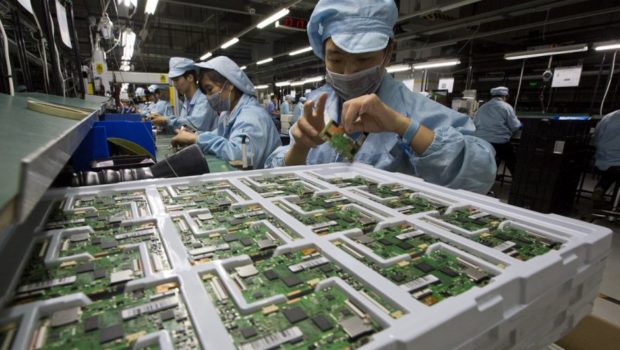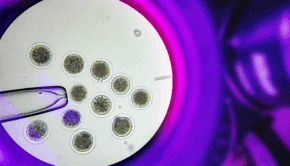Can Tech companies be Environmentally friendly
According to Greenpeace, Apple has been the most environmentally friendly of the world’s major tech companies 3 years in a row.
Greenpeace monitors the energy usage and utility of the IT sector. Reports show that it has continuously measured the degree to which renewable energy has been increased and prioritized in large internet companies. Apple and Google are the leading companies, which are balancing their expansions with a sufficient supply of renewable energy.
Contribution of Apple to Go Green
Apple products rely on unapologetic mining of rare earth and abundant metals. Some parts of gadgets like MacBook Air and Mac mini are made from completely recycled aluminium, with the best features of strength or finish. Apple targets to fulfill its goal of introducing a significant clean energy system into the company’s supply chain. This shall help in reducing the carbon emission of the large scale production of its products.
Apple’s deep concern against excess mining and scarce resources leads to work towards a systematic supply chain. That encourages reliability on renewable resources and is used to achieve desired materials. Also, from the recycling of old products, the need for constant mining on the earth can be gradually eliminated.
Adoption of Best Practise
Though in initial phases, Apple committed its aims to achieve this by adopting the best practices. For boosting the productivity of fabrication to cut waste away. Filling the market place with renewable resources and creating long-lasting products. This reduces the need for many handsets and laptops in the world. Enduring the wear-and-tear of everyday life for a year, the rigorous durability tests of the product are aimed.
Efficiency in many specific industrial developments has also led to producing substantial changes in its product models, which requires significantly less aluminium total. The company has developed a machine that is capable to take on apart hundreds of iPhones an hour in request to more accurately recover the spare parts that consist of the more engaging elements.
Apple has been moving and developing its environmental testing lab over the last many years and works in discovering feasible options and workarounds for substances that are deemed contaminants.
All companies in the electronics industry are facing the same challenges, and it’s important to note that only a few areas involved and vocal about their efforts to combat them as Apple.
Samsung’s success lines
Samsung’s production process focuses deliberately on minimizing the adverse environmental impact of its innovative products, as well, which include smartphones, TVs, and much more hence developed various unique, eco-friendly design processes. Samsung applies its primary principles of conservation by reducing, reusing, and recycling the product design. They implement a well-mapped resource management system that aligns the entire system in a circular motion. It aims to eliminate the environmental impact of its products by enhancing the productivity of its resources from initializing production to discarding obsolete products. This leads to recycling and reusing parts, packaging materials, and continuously developing ideally recyclable products for use in the future.
The company established an effective method to measure each product with an ‘eco-rating’ mark as Standard, Good, and Premium product. This system takes into account a country’s labelling efficiency in terms of being eco-friendly. Numerous aspects are considered as product’s compatibility with energy and resource efficiency standards, together with its impact on the environment. The product design and development is aimed to achieve the best labels in ecological standards.
Minimizing Gas Emissions
To minimize the emission of greenhouse gas (GHG) in the manufacturing process, as well as in the after-sales stage, the company built several measures to upgrade the energy efficiency of its products. To date, it has achieved a significant improvement. Constant efforts and practices towards this achievement have been made successful by establishing energy-efficient manufacturing and production units worldwide. During the production process allowing emission of any variant of generated greenhouse gases only after treating as per set standards.
Research and Development
Samsung is constantly researching ways to improve and installing environment-friendly manufacturing processes. Leading to the adoption of safe working conditions and products overall. The use of hazardous substances often used in the production of electronic items has already been significantly reduced. Popular products of Samsung’s televisions and many galaxy devices are made as most eco-friendly products.
Its intention to go green at every production stage has lead to the innovation of most dynamic and eco-friendly devices. Around the globe, different government and environmental organizations have honoured Samsung with awards for an array of eco-friendly products, and in recognition of the well-rounded, ‘circular’ system of resource management.
Apple Vs Samsung
Apple and Samsung both have drawn attention from the public due to their significant size and easy availability of their products. Apple faced accusations of releasing hazardous materials to the environment. Gradually many changes and concrete steps were adopted and since then the company stopped the use of hazardous elements in its products.
They joined hands with recognized energy-saving international firms with a motive to stand for energy conservation.
Samsung had an equally defaming accusation in exploiting natural resources and lacking ethical policies in favour of the environment. Lately, this company also showed up creative ways to make its processes, operations, and products more eco-friendly.
Conclusion
Both Apple and Samsung have upgraded their processes from time to time. Taking up the best practices of the industries to keep balance in environmental conditions and be in line with the concerned regulations.
They also encourage trade in programs not only to push their new products out in the market but also to fulfill their environmental charter.These preowned devices are not sold through their retail channels but end up at resellers like Phonebot who might refurbish and grade these devices based on their cosmetic condition or simply sell it as is. To illustrate, a brand new Samsung s10 costs $1100 AUD at other retailers where as a new galaxy s10 128gb costs only $799 AUD from Phonebot
Most modern smartphones are powered by lithium batteries extracted from the earth using extremely damaging techniques. Obsolete devices are often thrown away in improper ways. These practices may lead to adverse impacts on the environment and affect the ecological balance.
So it’s crucially important that both of these companies keep maintaining the optimum balance. By supplying consumer demands aligned with strictly following the policies and practices in favour of the environment.









![Future Pandemics [Infographic]](https://technofaq.org/wp-content/uploads/2017/04/future-pandemics-150x150.jpg)






